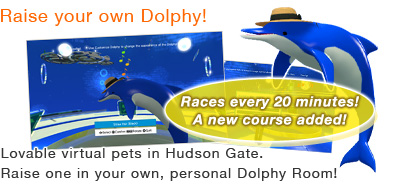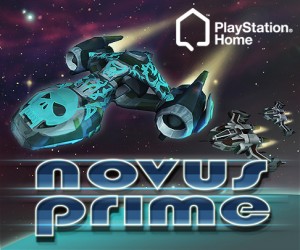So. Here’s A Question.
by NorseGamer, HSM Editor-in-Chief
I’ve been in Home since December of 2009. In that time, I’ve seen an avalanche of new content released. ModNation. Dragon’s Green. Magic: The Gathering. Seaside of Memories. Novus Prime. LOOT’s EOD technology. Aurora. Midway. Midway Two. SodiumTwo (coming up). Hudson Gate. Conspiracy. The list goes on for some length.
On the Sony forum and elsewhere, I’ve seen an increasing amount of caviling about Home introducing more pay-to-play (or “freemium”) elements. And so I really do have to ask: why is this even an issue?
If you notice, a lot of the content released in Home over the last several months has come from third-party developers. Unlike Sony, which has more than one way to generate revenue off of Home, these other developers can only generate revenue from sales of their products. So it’s only natural to expect them to offer a free experience and a greatly enhanced pay-to-access experience.
It goes deeper than this, though. Maybe I’m too far on the other end of the spectrum, but it still amazes me that Home itself is a free service to begin with. The first time I looked at it, I fully expected it to be a subscription-based service with a thirty-day free trial. (And, to be fair, a subscription-based Home would have one distinct advantage: you’d have significantly fewer griefers running around, alleviating their boredom by harassing other people.)
The problem is that Home didn’t start as a subscription service; it started as a free service, and — like almost any new business — had to give away quite a lot of enticements and freebies to build up the userbase. Now that Home has matured into a much more robust and expansive gaming experience, is it really any surprise that every single potential source of revenue is being explored and experimented with?
(This, by the way, does not mean that all Home commodities are priced correctly, or that their pricing strategies are necessarily always on-target. But, as was discussed in a recent episode of The Upload, pricing virtual commodities for a virtual world that’s barely a toddler is as much art as it is spreadsheets.)
One argument which I do to an extent understand is that while the gaming experience of Home has expanded dramatically over the last year or so, the core social experience — and the interface behind it — hasn’t really seen as much improvement.
Granted, there are exceptions to this. The 1.4 update streamlined the navigator interface, re-introduced public voice chat and created a storage feature for unwanted wardrobe items. The 1.5 update introduced additional save slots for avatar load-outs. And, indeed, simply utilizing Home doesn’t seem to be as cumbersome as it once was (even if load times are starting to creep back up).
That said, one thing I’ve observed which comes up as a request from the more veteran Home users — once you exclude the self-important proclamations and whiny, needlessly dramatic declarations about Home somehow not being what it once was (a statement which, as far as I can tell, is so far removed from reality as to be in a completely parallel universe sponsored by Microsoft) — is, when you boil it down, a desire to see the social elements of Home expanded and deepened.
We lampooned this a bit with our April Fools’ Day articles — the thinly-veiled wishlists fulfilled with the fictional 1.6 update — but the truth is that if you look at that article again, nearly everything on that list is a request which has been repeated countless times, and none of those items are in any way related to the gaming elements of Home.
The catch, of course, with expanding and deepening the social interactivity of Home — improved clubhouse features, additional emotes and gesticulations, etc. — is twofold: such improvements require core client updates (which have a cost associated with them) and may face technological limitations we’re unaware of, and the profitability of such improvements cannot be easily quantified.
The profitability of a new gaming experience is easy to measure. The profitability of enhanced social experiences is far more opaque (unless, of course, they were for-purchase downloadable commodities). It might increase the average length of time of a typical user session. It might increase the number of active users. Second Life, for instance, has more than twenty-million registered accounts, but averages 54,000 concurrent users (as of May 2010). Attracting and retaining more users means, quite simply, a wider base for revenue generation; certainly, intuition suggests that improving the social elements of Home would help to retain long-term users (and their dollars) — people who stuck around on Home because of the friends they made, which I think is safe to say is a major reason why most of us still use the service.
Or, using a bit of reverse logic, look at it this way: users who are enthralled with the social elements of Home are almost certainly more likely to purchase virtual commodities and gaming experiences offered by Sony and other developers.
The key to this logic is assuming that the glue of Home’s user retention isn’t the gaming experience at all, but rather the social experience. This, of course, is one of HomeStation Magazine’s core beliefs. I know that I personally don’t sign into Home specifically to play games (with very rare exceptions such as Sodium or Novus Prime); I sign into Home to enjoy the social experience of it all, and the gaming is simply icing on the cake.
Perhaps that makes me a bit of an oddity. After all, the PS3 is a gaming console, which means that practically everyone using Home is a gamer.
And this brings me very neatly back to my original question: if gamers populate a virtual reality, and the developers of that world are offering more and more gaming elements to appease and appeal to said population, then what on Earth is wrong with charging money for such experiences?
In real life, I’m something of a Harlan Ellison enthusiast. One thing he sometimes talks about is the fact that this internet generation we live in has a rather odd belief that things should be free. Not just information, mind you, but creative works. And the truth is that, no, a whole bunch of really talented people worked their collective asterisks off to produce that shiny new game you’re playing. They deserve to make money off of it.
And guess what? If we don’t like a particular commodity, we don’t have to buy it. I, personally, will likely never invest in the Mansion. As wonderful a collection of spaces as they are, the pricing strategy is borderline offensive to me. It sure hasn’t stopped Sony from making a healthy ROIC off of that investment, if the top ten lists are any indicator. And that’s great. I wish Sony nothing but the best of financial success, because the more revenue Home generates, the more experiences and enhancements Home will continue to offer. Maybe, fingers crossed, some of those enhancements will be social as well as gaming. I’d pay for those. So would a fair percentage of this publication’s readership, I suspect.
I’m just trying to figure out why there’s growing resistance to the idea of more freemium elements in Home. But, hey, I’m here more for the social experience. Maybe I’m being too myopic. Are there aspects of this that I’ve overlooked? Do you agree with me? Am I full of guano? Sound off.






 LinkedIn
LinkedIn Twitter
Twitter
I agree that the games on home are icing for my social experience cake.The games on home are fairly nice and relatively cheap but aren’t in the same league as my disc-based games,yet.If home were subscription based i’d never would have entered it,if it were changed to subscription based right now i’d have a hard decision to make.I’ve spent quite alot on personal spaces,clothes,furniture,etc. and wouldn’t wanna leave that money on the table but if i had to pay a monthly fee i’d expect more.No freezing up or error codes,24/7 operators to help me out,updates that don’t knock out the network.I think what would tip the balance in favor of me staying despite a monthly fee would be the friends i’ve made in home,no game could convince me but the ability to interact with my friends,and even strangers,could.As for things getting expensive,honestly i don’t see it that way.All these games are choices that no 1 is compelled to buy,don’t like the price?don’t buy it.Most games ive seen are fairly inexpensive,if some1 were trying to buy every single thing in home then i could see the concern about pricing,every1 else buys what they can and plays games they can’t afford at a friends.Already spent your monthly budget before that new game came out?Make a friend that has it,it’ll give you a chance to see if you really want it and improve your social skills while enlarging your circle of friends.
I agree wholeheartedly with you Norse, but of course you knew that already. I play a few games in Home, but very few. I like the new one in the Sodium space right now, I can see why that will become addicting, but as a rule I come into Home for the social aspects. I have made a lot of really good friends here and although I could not afford to pay for it at this time, I agree with Cthulu that it would be a hard decision for me to just leave it behind. Don’t really think I could no matter the cost, but it wouldn’t be because of what I have spent, it would be because of the relationships I have made here.
i think it’s just a strategy for sony to “enlarge” the HOME market!
Home isnt a big market, the real market for sony is the real gamer(“”)who buy disk,dlc and psn game!
for these pples, home isnt very attractives, they ignore the social dimention when they visit for the first time home, and when they try one of the numerous mini-game (when all run correctly) they are a little disapointed (and i can understand what they feel!).
so, to capture this very large market(and to keep them on Home)Sony must increase significaly the quality of games on home…
the social aspect become secondary…
i think when sony seduce gamers on home they will choose to increase the social experience i hope, cause like you norse and many of HSM fan i love home for the socials experiences, i don’t care mini games, for me they just are pretext to meet other people!
I hope my English is clear enough to be understood that my thoughts!
have fun people^^
I started on home because of the EA poker rooms (and let me take this opportunity to apologize up front for my constant blathering about the poker rooms… seems like I mention them in every post). As I have said before they were a perfect blend of socializing and gaming. Yes there is still poker to be played in God Father 2, but the chat interface is less convenient and to me, the atmosphere is far less appealing. The treat of cross “Family” tension, lighting and the muzak (which to me sounds completely composed of “brown tones”) makes it a completely different experience. I only mention this because; A) I am contractually obligated… just kidding, and B) because even though the access was free which allows everyone to enter and that includes those who wanted to just disrupt the games by dancing on the tables and taunting the players, it supplied a common interest as a foundation for the building of long lasting friendships.
As someone that has not shied away from spending money on home, I can understand the need for the efforts of developers to be financially rewarded for there hard work. And I would pay for the opportunity to play well thought out games that don’t have a limited shelf life. But there is also a need for games that are inclusive of those that are new and exploring this social experiment that we all love.
I am an avid gamer and even more so an avid socializer, and I find the combination of the two is addictive and intoxicating (I must have Tiger’s Blood). Pay to play game do appeal to me. It gives the developers the ablity to raise the bar and give us content that justifies the cost. And, even though I spend a lot of time helping “Noobz” overcome the learning curve and in doing so have made good friends that have access to more tools to help them become better home citizens, the thought of weeding out some of the “just bored, non money spending harassers” so everyone can enjoy both socializing and game play has a strong appeal to me.
So, to rap up this collection of run on sentences… and in short (to late huh)… as always, I agree with the wise NorseGamer. And it only took 407 words to say so (this was written while the PSN was down, so I had time to count them)
As long as they don’t take my Echochrome
I’ll keep on commin’ back to Home
(Crap…is it too late to submit that to the poetry contest?)
Momma dont take my Echochrome awayyyyy
Isnt that a Simon and Grafunkle song?
That’s Kodachrome Olivia, LOL
Paul Simon and Art Garfunkle are secret Homelings. “Mother” is their adopted child. They have been lurking in Home since Beta days using avatar names you would never believe, even if i revealed them here. Listen carefully to that record (or play it backward) and you will hear Echochrome……….
Heya, NG. I’ve been on PSN since Dec 11th, 2009 (Home’s first anniversary). The question of how Home makes money for Sony has piqued my curiosity from the start. On my first day running around Home, my gut reaction was, “Hey all the separate parts of this place must make it huuuuuge.” My second immediate thought was “Well who’s paying for all this, if it’s free?”
That’s when I accidentally ran into the ATM machine in Central… and I discovered (1)
Sony was making purchaseable avatar items just like XBL does; and (2) the PSN inventory of virtual Christmas offerings was lengthy enough to freeze my connection. D’oh!
Bottom line here, of course, is obvious. Any platform savvy enough to attract an active user base is going to require at least a Freemium model in order to stay alive. SOMEONE has to pay for the development of virtual intangibles, and all the hosting costs and download bandwidth, at the very least. But as the success of games like Farmville has shown, any online platform that builds a big enough audience can find ways to make money from them.
The backlash we see, with regards to your question (“why is there growing resistance to the idea of more freemium elements in Home?”) may have more to do with way that the goods have been marketed to us. For example: store previews give minimal detail presentation without scale references, and often there’s insufficient and often misleading game-item usage descriptions. Then there’s that incessant, and obnoxious, “Be the first -- Buy now, Collect them all!” seller mentality complete with eye-shredding neon colors. The apparent desire of several vendors to match the price points for ‘similar’ items on XBL is also misguided, as complaints on blogs about opportunistic pricing has shown.
I think the turning point for Home — in terms of seeing more aggressive marketing issues — may have come after Forbes revealed (last June) that the sales of Xbox Live’s virtual goods totalled ~$1.2 BILLION in the past year. In fact, XBL microtransaction sales had surpassed their actual Gold subscription business. Sony is experimenting with playing catch-up in the virtual goods market.
Certainly it’s going to be difficult for SCE to find a happy medium, in terms of turning a profit while keeping all of us consumers interested, excited and satisfied with the Home platform. Not an easy task for Sony when we’re all so very demanding about Home, right? ;p